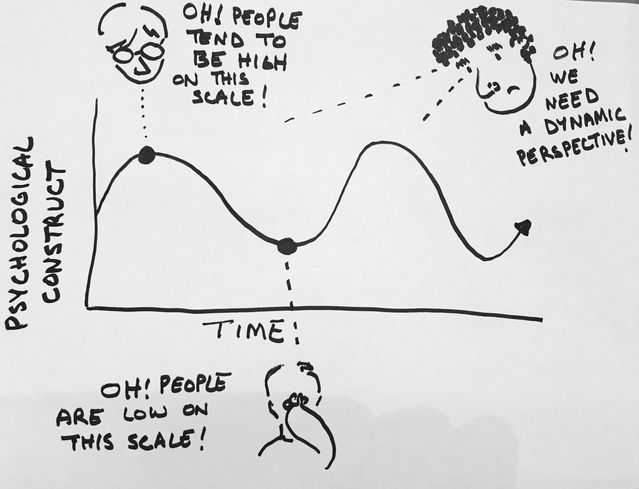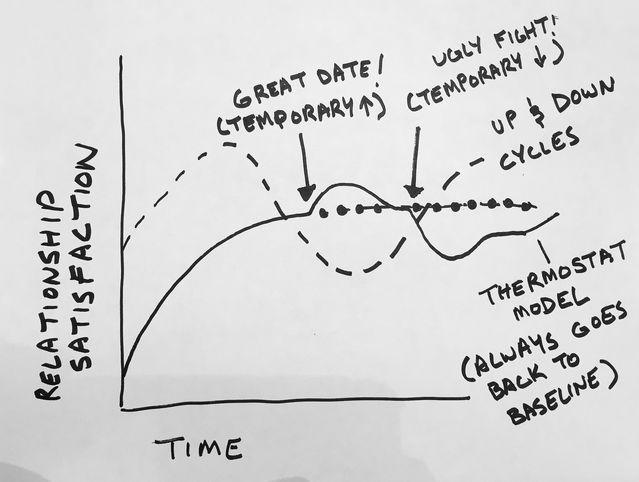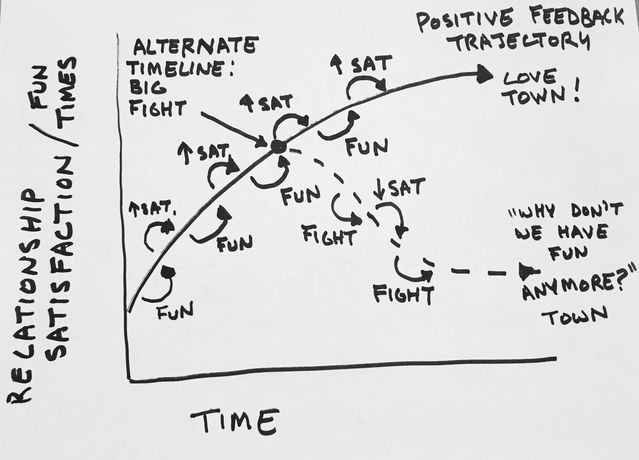Cognition
Dynamic Systems Thinking
The coming conceptual revolution in psychology
Posted October 11, 2019 Reviewed by Matt Huston

“Personal histories are processes of change in time, and the change itself is one of the things immediately experienced.” – William James, 1922
Psychologists have been thinking in terms of dynamic systems for over a hundred years, but they haven’t translated this thinking into the kinds of experiments and research designs they use—until recently. In several corners of psychology, from research on motor control (how we can control our bodily movements) to research on social psychology (like how emotions change over time) to research on clinical psychology (like how symptoms are interrelated and change) to developmental psychology (like how children learn skills), dynamic systems are beginning to provide new insights. In the next generation of psychology research, I predict that an understanding of dynamic systems will characterize many of the most important conceptual breakthroughs.
Dynamic systems research is the study of patterns of change over time. Many of the analytic tools used to study dynamics come out of physical systems, which have long been treated in terms of patterns of change. This typically means thinking in the language of calculus: we are not just interested in the position of a pendulum (for example) in a specific moment. We are also interested in the velocity (first derivative) and the acceleration (second derivative). More broadly, this means that adequately describing many physical systems means not just characterizing them at one moment, but characterizing their global patterns of behavior. We know what’s going on with a physical system with repeating behavior, like a pendulum or coupled oscillator, when we can characterize a complete cycle of movement.
Leaving the complexities of the math aside, this way of thinking about a research problem can change our understanding of psychological topics. As an example of the traditional approach, if a psychologist was interested in relationship satisfaction among romantic partners, they might ask people to answer some questions about relationship satisfaction and some questions about factors they think predict it—for example, how often the partners have fun together and how often they argue. But this is a static picture. It assumes that relationship satisfaction and the things that predict it can be adequately described by taking a snapshot of them. In this view, close attention isn’t paid to when the snapshot is taken. It’s assumed that not much would differ whether you took it on a Monday or Friday, or whether you took in just before a date or just after an argument.

If we adopt a dynamic systems approach, however, you would start by thinking about the overall patterns of change in relationship satisfaction over time. Does relationship satisfaction go through cycles? For example, do people have a repeating pattern of ups and downs in their relationships, like a pendulum swinging back and forth? Or is it more like a thermostat model, where people have a “preferred temperature” of relationship satisfaction that they try to move towards whenever events—an argument, a stressful day at work—pushes them away from it? We would want to understand this cycle of change before we start digging into predictors, because when there’s a repeating pattern, one of the most important predictors can be the variable itself—what relationship satisfaction was like in the previous moment and where in the overall cycle the couple is.
What we had previously considered predictor variables—like number of fun events and number of arguments—are also thought of differently in a dynamic systems approach. Instead of estimating how often fun events happen “in general,” we would consider when they happened and how relationship satisfaction changed at that time (and right afterwards). Having a fun event might matter more to a relationship on the brink—satisfaction is at a low point in a cycle—than to a relationship that’s flying high.

Systems thinking also tends to blur the distinction between cause and effect, and to evoke the idea of “circular causation.” Circular causation sounds like it muddies things, but it actually captures the reality that systems often operate as feedback loops. Fun events might cause people to feel more satisfied with their relationship, but people who feel more satisfied with their relationship might also be more likely to have fun together. This feedback between having fun together and feeling satisfied in your relationship could then generate an “upward spiral” that sets the relationship on a trajectory of increasing positivity. This overall trajectory could be substantially altered by one bad fight (something readers—and your author—have experienced in their relationships). The fight reduces relationship satisfaction, and then it becomes harder to find opportunities to have fun together. Pretty soon a relationship that was heading up can feel “merely OK” or actually start heading in the opposite direction.
Of course, dynamic systems have been explored for generations in physics, biology, and economics now, and so there are lots of other ideas for psychologists to consider.
- At what time scale do things change? Do we tend to update our relationship satisfaction every hour, every day, every week?
- How do we characterize the global pattern of change? There’s a whole language of topology, attractors, repellers, and more that are used to show where a system is likely to end up given any particular starting point. In terms of relationship satisfaction, we might think of this in terms of habits or ruts that we tend to fall into.
- Should we try to influence variables, or the underlying structure of the system? When we try to improve a relationship, we can now think about different approaches: increasing the number of fun events (influencing a variable), or changing how strongly we react to arguments (decreasing the coupling between arguments and relationship satisfaction).
This is to say nothing of the areas of dynamic systems referred to as complexity science, chaos theory, or emergence. There is a lot for psychologists to explore in these areas!
I’ve used the example of relationship satisfaction here to show how intuitive and important the questions raised by a dynamic systems perspective are. But this is just one example, and I think there are many more topics in psychology that we could better understand by adopting the conceptual tools of dynamic systems. As William James understood, lives are historical—what we have experienced before leaves a mark on who we are as people. Psychology research is ready to move beyond snapshots and into the study of these changes over time.
References
James, W. (1922). Essays in Radical Empiricism (Original 1904). New York: Longmans, Green and Co.


